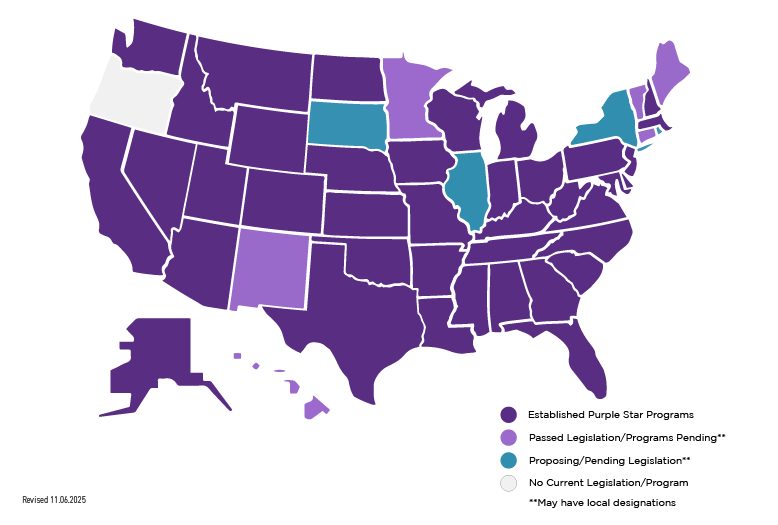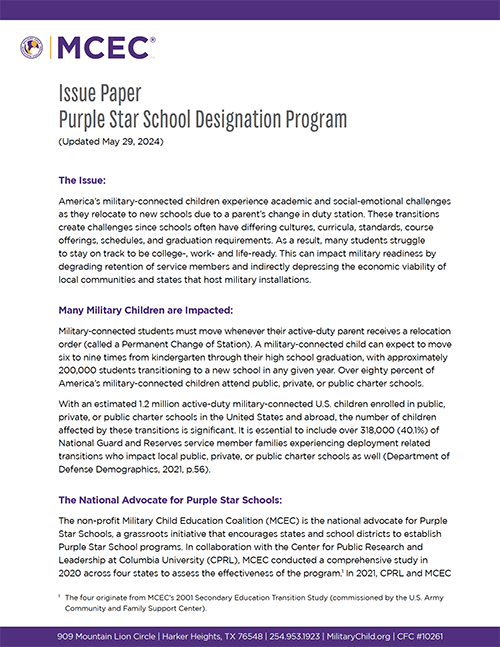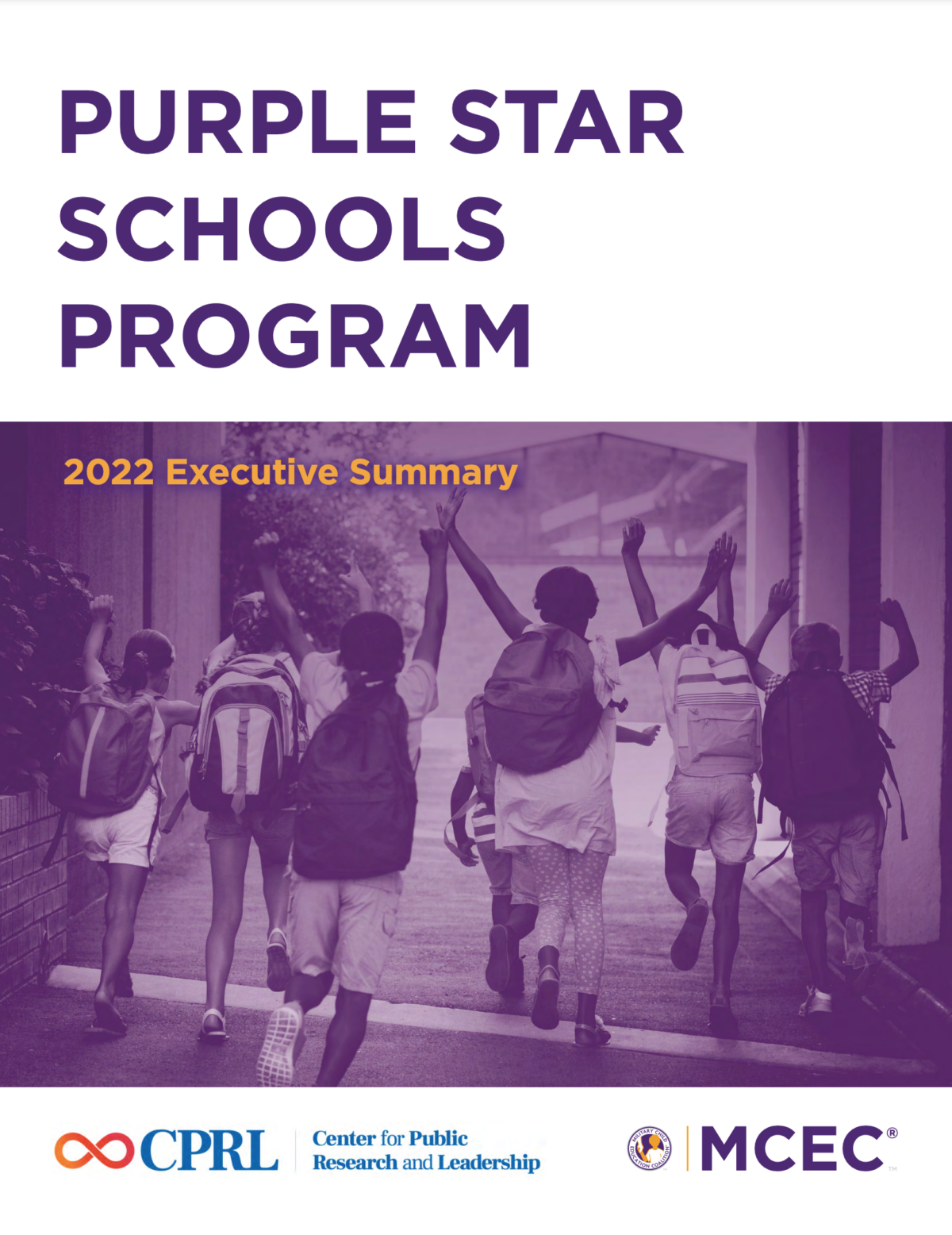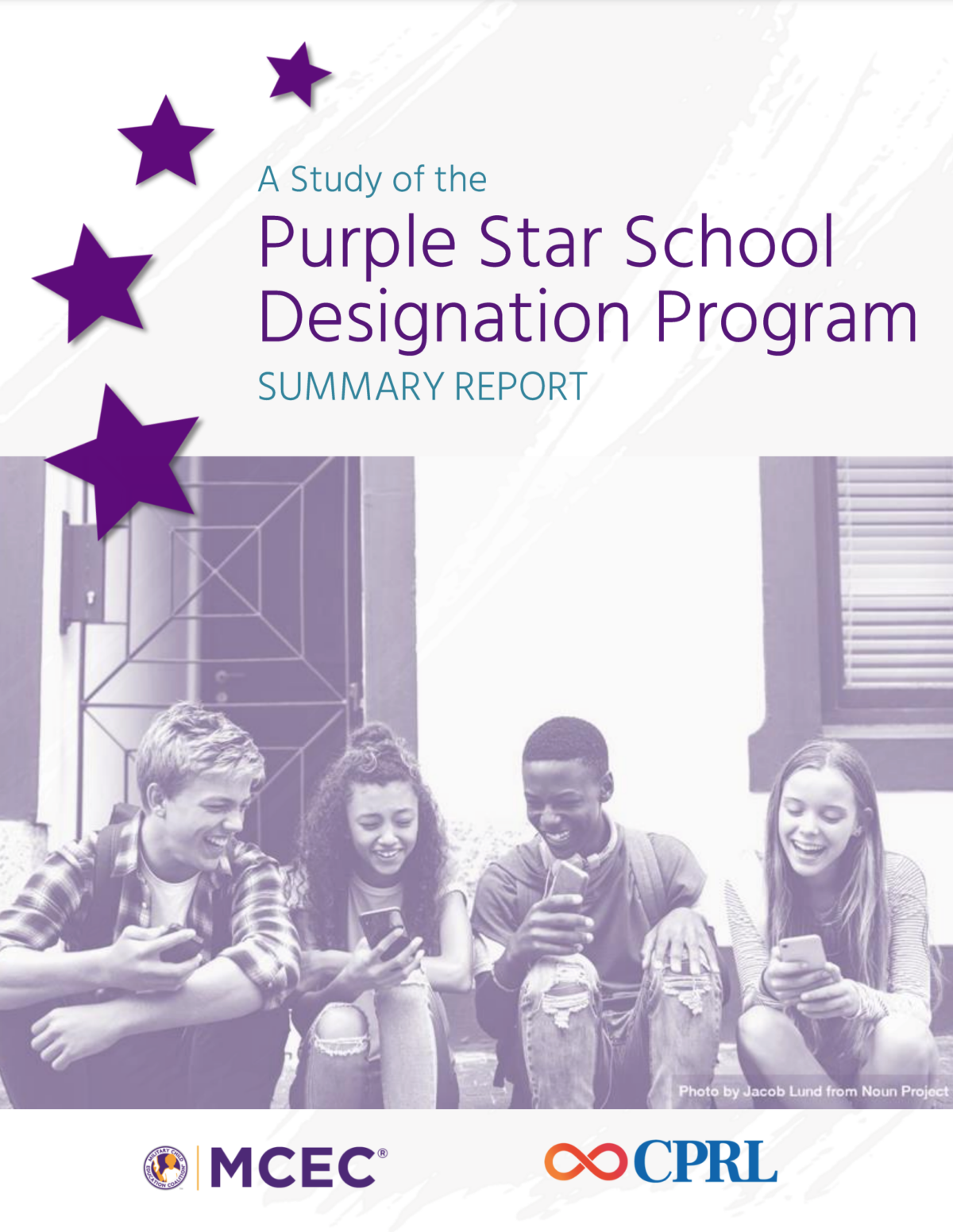About
MCEC is the national advocate for Purple Star Schools, a program that supports military-connected children as they relocate to new schools due to a parent’s change in duty station.
Military children move every two to three years. The Purple Star School program is designed to help schools respond to the educational and social-emotional challenges military-connected children face during their transition to a new school and keep them on track to be college, workforce, and life-ready. Military-connected refers to children of service members on active duty, and in the National Guard and Reserves.
MCEC is the nation’s most complete resource for states seeking to start a Purple Star School program. We stand ready to offer guidance and serve in a consultative role every step of the way. As of November 2025, 44 states have Purple Star School designation programs or approved legislation, and five states have proposed legislation:

To better understand the landscape around and impact of the Purple Star program, MCEC partnered with the Center for Public Research and Leadership at Columbia University (CPRL) in 2020 to conduct a study of the program across four states. In 2021, CPRL and MCEC released a summary report of findings related to the landscape of the program, including recommendations for improvements at the school, district, and state levels.
Read the original report here:
A new 2022 report builds on the findings from the 2021 summary and provides additional detail on how the program has been implemented over time. It specifically focuses on how the program has evolved and how stakeholders have worked to ensure rigor and sustainability.
Drawing on research across six focus states, this report reviews the benefits of, and challenges associated with program requirements, provides insights on program administration at various levels, discusses the effects of COVID-19 on PSS, and provides recommendations at the state, district, and school levels to improve and expand the initiative.
Once your state begins a program, we also offer support to individual schools seeking designation as a Purple Star School.
Learn more about Purple Star Schools and how your state can begin the process below. And if you have any questions, please contact our Military Student Consultants at MSC@MilitaryChild.org.

Purple Star School Designation Program
America’s military-connected children experience academic and socialemotional challenges as they relocate to new schools due to a parent’s change in duty station. These transitions create challenges since schools often have differing cultures, curricula, standards, course…Browse All Purple Star School Resources:
S2S Case Study Evaluation Report
In partnership with the Military Family Advisory Network (MFAN), this two-year, third-party evaluation confirms that MCEC’s Student 2 Student® program…Ohio & South Carolina PSS Best Practices Report
2025 Purple Star Schools Best Practices Partnership Town Hall ReportMilitary Student Identifier (MSI) Position Statement
With the adoption of the Every Student Succeeds Act (ESSA), military‐connected students are now recognized as a distinct subgroup, including…Military Student Identifier (MSI) FAQs
With the adoption of the Every Student Succeeds Act (ESSA), military‐connected students are now recognized as a distinct subgroup, including…
Military Student Identifier (MSI) and Impact Aid
Learn about the impact transitions have on military-connected students and how you can support environments for them to succeed.

2022 Purple Star School Report
Military-connected students have distinct educational experiences. They are three times more likely to move than their civilian peers, which means…

2022 Purple Star School Executive Summary
Military-connected students are no strangers to having to start over. From a young age, many endure frequent moves, new schools,…
Understanding Purple Star Schools
Learn the history behind the Purple Star Schools Designation Program with Pete LuPiba, the importance for military-connected families, and the…
